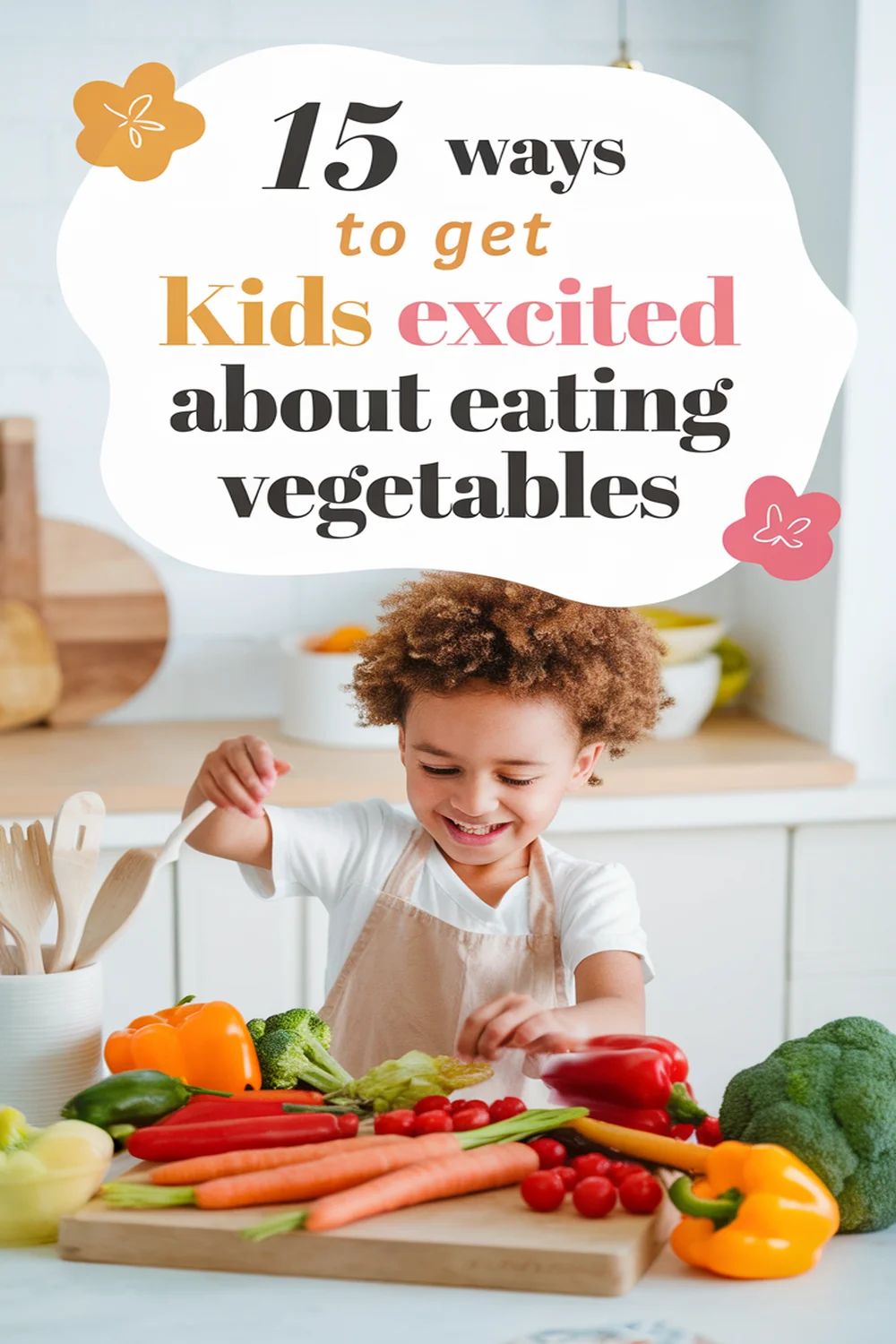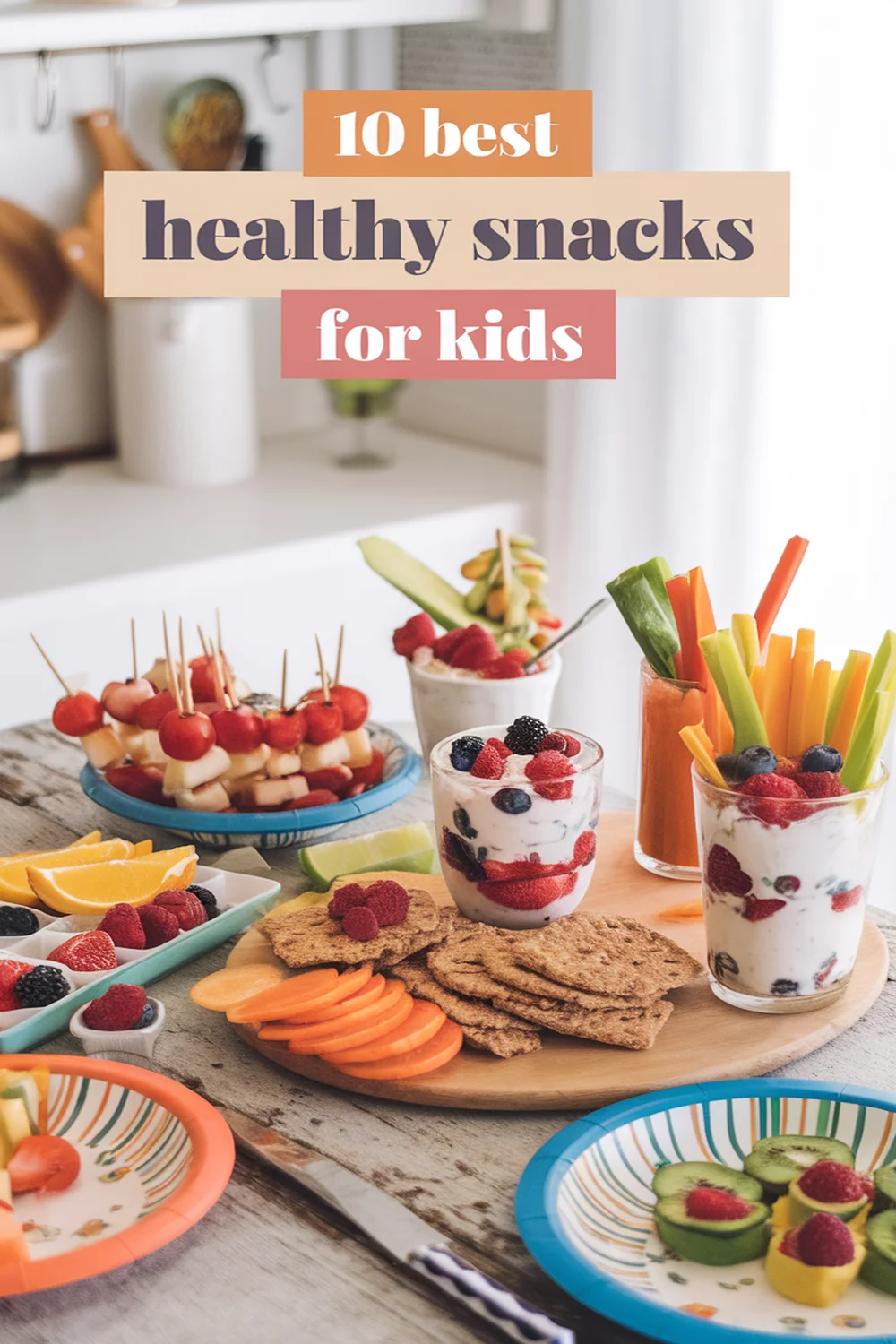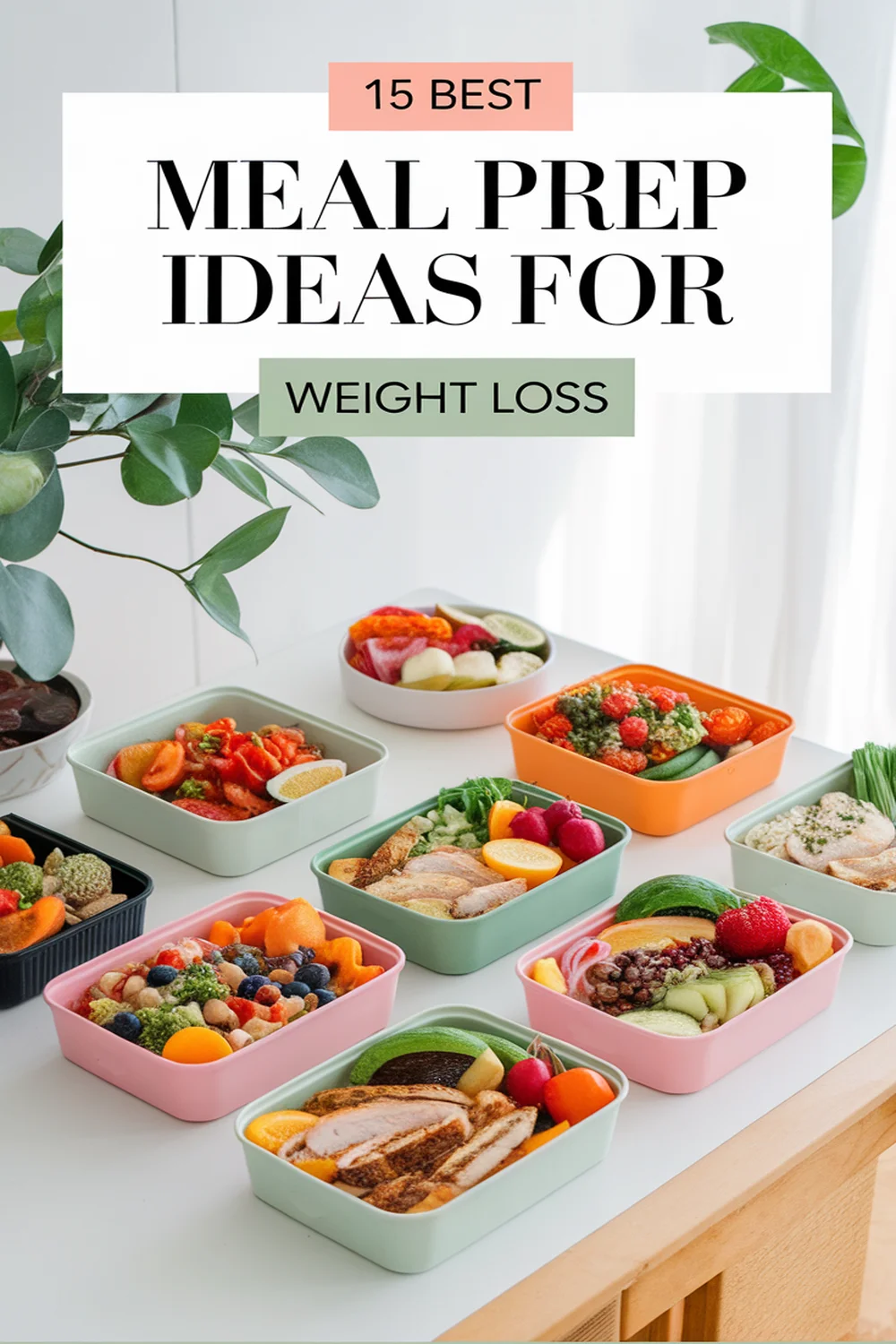Getting kids excited about veggies can be fun! Start with colorful plating to catch their eye and involve them in cooking to boost their confidence. Create playful vegetable characters or let them experiment with delicious dips. Growing their own veggies sparks interest, while sneaking greens into smoothies makes them tasty. Offer a variety of textures and flavors to keep mealtime exciting. There are plenty more creative ways to make vegetables enjoyable—keep discovering how!
Make Veggies Fun With Colorful Plating
To get kids excited about eating vegetables, you can often make their meals more enticing by focusing on colorful plating. Use a variety of vibrant veggies, like red bell peppers, orange carrots, and green broccoli. The bright hues attract kids’ attention and make meals visually appealing. Research shows that children are more likely to try foods that are presented in an interesting way. Experiment with fun shapes using cookie cutters, or create rainbow salads. Complement the veggies with dips like hummus or yogurt-based dressings to enhance flavors. Don’t underestimate the power of engagement—let your creativity shine! When you elevate the presentation, you’re not just serving food; you’re sparking curiosity and joy around healthy eating habits that can last a lifetime.
Involve Kids in the Kitchen
When kids help in the kitchen, they’re more likely to develop a positive relationship with food, especially vegetables. Engaging them in meal preparation gives them a sense of ownership over their meals. Let them wash, peel, or mix veggies; they’ll feel proud of their contributions. Studies show that kids who participate in cooking are more inclined to try new foods. Involving them in selecting vegetables at the store can also spark their interest. Ask for their input on recipes or create a veggie-based dish together. This hands-on experience not only teaches them valuable skills but also boosts their confidence. By making them active participants, you’re fostering a curious palate and encouraging healthier eating habits for the long term.
Create Vegetable Characters
After getting kids involved in the kitchen, you can further spark their imagination by creating vegetable characters. This fun activity encourages creativity and makes veggies less intimidating. Start by choosing colorful vegetables like bell peppers, cucumbers, or carrots. Encourage your kids to use toothpicks, edible eyes, and other kitchen supplies to bring their characters to life. Research shows that children are more likely to eat food they have a connection with, so these characters can foster a positive association with vegetables. You can hold contests for the most creative designs or even have storytime, featuring the personalities of their vegetable creations. Combining play and nutrition not only makes mealtime enjoyable but also instills healthy eating habits for the future.
Experiment With Dips and Sauces
While veggies might sometimes seem bland to kids, experimenting with dips and sauces can transform their dining experience into a fun culinary adventure. By introducing colorful and flavorful accompaniments, you’ll make vegetables irresistible.
Here are some tasty options to try:
- Hummus: Creamy and packed with protein, it pairs well with carrots and cucumbers.
- Ranch Dressing: A classic favorite, perfect for crunchy veggies like bell peppers and celery.
- Peanut Sauce: This savory dip adds a delightful twist to green beans and broccoli.
- Guacamole: Avocado goodness makes even the simplest veggie stand out.
Engaging your kids in creating these dips can elevate their excitement, making them enthusiastic to munch on their veggies with a smile!
Recommended Items
Check out these fun health and wellness products and equipment to make veggies a hit with your kids!
Grow Your Own Veggies
Growing your own veggies can be one of the most exciting ways to spark a love for vegetables in kids. When kids participate in gardening, they learn where their food comes from and develop a sense of responsibility. Start small with easy-to-grow crops like cherry tomatoes, radishes, or lettuce. The act of planting seeds, watering, and watching the plants thrive creates a sense of achievement. Research shows that children who grow their own produce are more likely to try and enjoy eating them. Involve your kids in the whole process—designing the garden, planting, and harvesting. This hands-on experience builds their confidence and curiosity about vegetables, making them more willing to eat what they’ve nurtured. Plus, fresh veggies taste even better!
Use Veggies in Creative Recipes
One great way to get kids excited about eating vegetables is by incorporating them into creative recipes that spark their imagination. When you make veggies fun, they become less intimidating and more appealing. Here are some ideas to get you started:
- Veggie Face Pizzas: Let kids decorate individual pizzas with tomato sauce and assorted veggies to create silly faces.
- Rainbow Wraps: Use colorful vegetables in wraps, making them visually appealing and nutritious.
- Frozen Veggie Pops: Blend spinach or carrots with fruit juice and freeze them in molds for a rejuvenating treat.
- Veggie Dippers: Serve a variety of cut vegetables with fun dips like hummus or yogurt.
Host a Vegetable Tasting Party
Hosting a vegetable tasting party can transform the way kids perceive veggies from mundane to exciting. Start by selecting a variety of colorful, fresh vegetables. Include different textures and flavors, from crunchy carrots to creamy avocados. Set up tasting stations, allowing kids to sample each veggie raw, roasted, or paired with dips like hummus or ranch. Encourage them to rate their favorites on a fun chart. Add an element of competition with friendly prizes for the most enthusiastic taster. This interactive experience builds curiosity and encourages open-mindedness. Plus, it’s an excellent opportunity for kids to develop their palates and share their thoughts. By making veggies fun, you’re helping them cultivate healthier habits that’ll last a lifetime.
Share Interesting Veggie Facts
After the excitement of a vegetable tasting party, you can keep the enthusiasm going by sharing some fascinating facts about the veggies kids enjoyed. Engaging their curiosity with intriguing trivia not only educates but also makes veggies more appealing. Here are some fun facts to share:
- Carrots were originally purple until the Dutch cultivated the orange variety in the 16th century.
- Broccoli contains more vitamin C than an orange—it’s a powerhouse!
- Spinach can help strengthen muscles due to its high iron content.
- Bell peppers can be red, yellow, and green because they change color as they ripen.
These facts can spark conversations and help kids see vegetables in a new light, making them excited to eat more!
Read Books About Vegetables
To encourage kids to embrace vegetables, consider diving into books that celebrate these nutritious foods. Reading can spark their curiosity and make veggies fun. Look for colorful illustrations and engaging stories that highlight different vegetables and their health benefits.
Here’s a simple list of delightful vegetable-themed books you might want to explore:
| Book Title | Author | Key Theme |
|---|---|---|
| “The Vegetables We Eat” | Gail Gibbons | Explores the variety of veggies |
| “Oliver’s Vegetables” | Vivian French | Adventure in gardening |
| “Tops & Bottoms” | Janet Stevens | A fun take on growing plants |
Task Overview for Veggie Excitement
Play Vegetable-Themed Games
While many kids might shy away from eating their greens, playing vegetable-themed games can turn mealtime into a fun-filled adventure. By incorporating games that revolve around veggies, you’re not just sparking interest but also fostering a positive attitude toward healthy eating. Here are some entertaining ideas to get you started:
- Veggie Bingo: Create bingo cards filled with different vegetables.
- Veggie Charades: Act out different veggies while others guess what they are.
- Gardening Race: Have a fun relay where kids “plant” (place) vegetable cutouts.
- Veggie Art: Use veggies to create fun shapes and designs.
These activities not only entertain but also educate kids about various vegetables, making them more likely to enjoy eating them!
Integrate Veggies Into Favorite Dishes
Integrating veggies into your child’s favorite dishes can make healthy eating feel effortless and enjoyable. By sneaking in nutritious ingredients, you’ll not only enhance flavor but also boost their dietary variety. Use the table below for inspiration on how to transform classics into veggie-packed meals:
| Dish | Veggie Additions | Tips |
|---|---|---|
| Spaghetti | Spinach, zucchini spirals | Blend into sauce for invisibility |
| Tacos | Diced bell peppers, corn | Mix with meat or beans |
| Pizza | Cauliflower crust, mushrooms | Use a thin layer of cheese over veggies |
These simple adjustments can make a significant impact on your child’s veggie intake while keeping mealtime fun!
Make Smoothies With Hidden Veggies
Creating smoothies with hidden veggies not only boosts nutritional value but also makes for a delicious treat your kids will love. By blending fruits and vegetables together, you can mask the taste of greens while providing essential nutrients. Here are some great veggies to sneak into smoothies:
- Spinach: Easily blends in with fruits, adding iron and vitamins without altering the flavor.
- Carrots: Adds natural sweetness and a good source of beta-carotene.
- Cauliflower: Provides creaminess and fiber without overpowering the taste.
- Avocado: Rich in healthy fats, it makes your smoothie creamy and satisfying.
Experiment with different combinations, and your kids won’t even notice the hidden veggies—just the delightful taste!
Set Up a Veggie Garden
Setting up a veggie garden can spark your kids’ excitement about eating vegetables while teaching them valuable lessons about nature and nutrition. Involve your children in selecting seeds for easy-to-grow vegetables like carrots, radishes, or cherry tomatoes. This hands-on experience helps them take ownership and fosters a sense of responsibility. As they watch their plants grow, they’ll develop a stronger connection to the food they eat. Encourage them to water, weed, and ultimately harvest the veggies, creating anticipation for mealtime. Studies show that kids who participate in gardening are more likely to try—and enjoy—eating vegetables. Plus, enjoying the fruits of their labor adds an element of joy and accomplishment that can transform their attitude towards healthy eating.
Offer a Variety of Textures and Flavors
When you offer a variety of textures and flavors, you not only make vegetables more appealing but also open up a world of taste experiences for your kids. Engaging their senses can spark their interest in vegetables. Here are some ways to mix it up:
- Crunchy: Try raw bell peppers or carrot sticks for a satisfying bite.
- Creamy: Serve mashed sweet potatoes or pureed soups to introduce smoothness.
- Savory: Roast vegetables like broccoli or cauliflower with spices for a deeper flavor.
- Sweet: Incorporate sweeter options like roasted beets or carrots to balance tastes.
Lead by Example With Healthy Eating Habits
Kids often take cues from the adults around them, making your eating habits a powerful influence on their food choices. If you regularly eat vegetables, your kids are more likely to follow suit. Studies show that children are more inclined to try new foods when they see their parents enjoying them. Make veggies a staple at mealtime; prepare colorful salads, steamed broccoli, or roasted carrots. Show enthusiasm when you eat these foods—your excitement can be contagious. Additionally, involve them in choosing and preparing vegetables to deepen their interest. When you model healthy eating, you reinforce the importance of nutrition and create a positive relationship with food, fostering a lifelong habit of healthy eating for your children.











